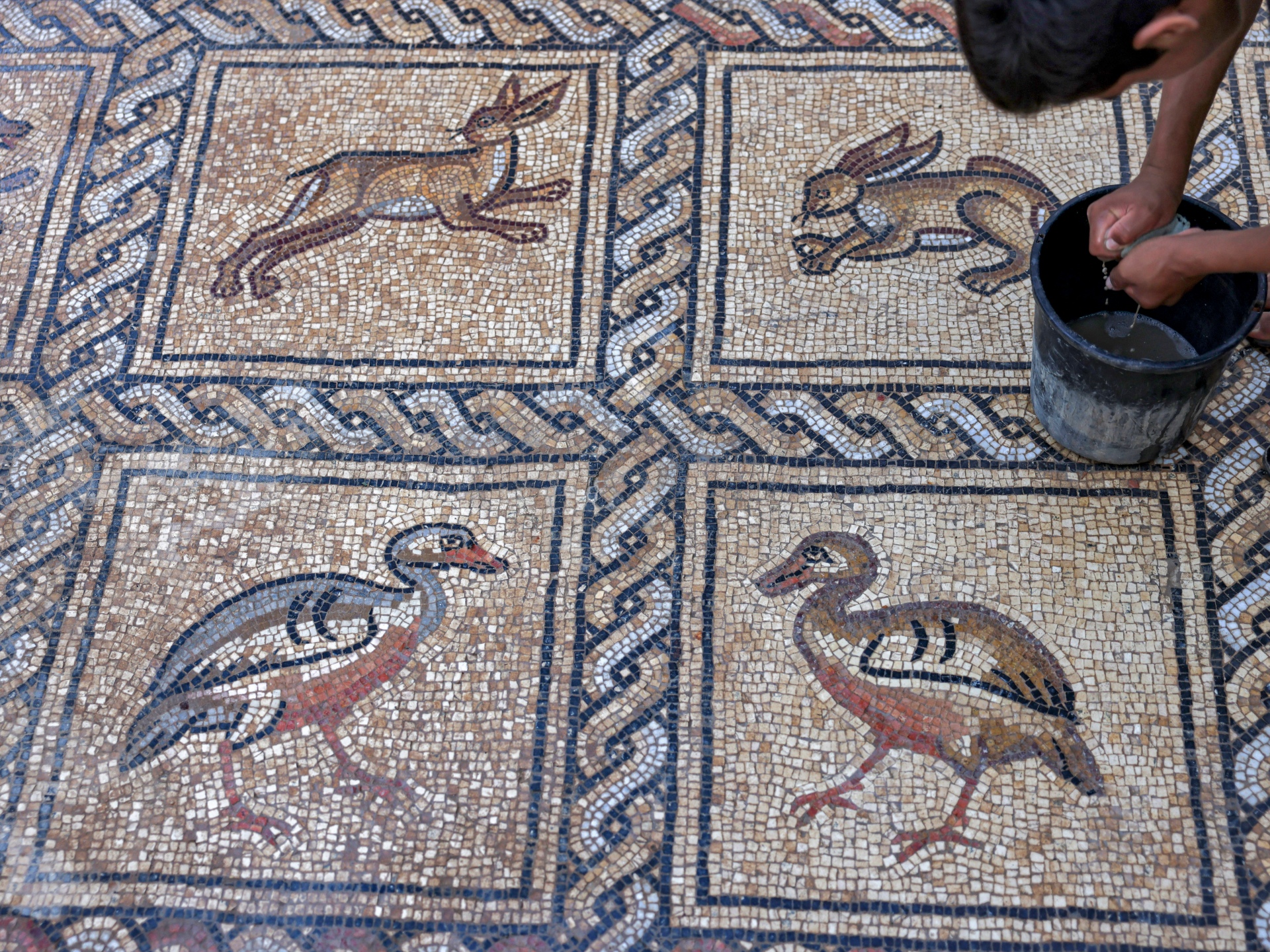Byzantine mosaics dating from the 5th to the 7th century have been unveiled in the central Gaza Strip on Friday.
Farmer Salman al-Nabahin unearthed the relic six months ago while working in his olive orchard in the Bureij refugee camp. He then spent three months excavating it with the help of his son.
The mosaic floor, boasting 17 iconographies of beasts and birds, is well-preserved and its colours are bright.
“These are the most beautiful mosaic floors discovered in Gaza, both in terms of the quality of the graphic representation and the complexity of the geometry,” said René Elter, an archaeologist from the French Biblical and Archaeological School of Jerusalem, whose team examined the finds, told the Associated Press.
Elter estimates the mosaic floor dates back to a time between the 5th and the 7th centuries but told AP a proper excavation is needed to determine when exactly it was built and whether it was part of a religious or secular complex.
He has not been able to visit the site but viewed photos and videos taken by local research partners.
The mosaics are the latest in a series of Byzantine archaeological finds in Gaza in recent years.
In January, the remains of a 5th-century church were unveiled in Jabaliya in the northern Gaza Strip following a three-year restoration project.
The Gaza Strip, a Palestinian coastal enclave between Israel and Egypt, was a bustling trade route between Egypt and the Levant in ancient times. The coastal strip is full of remains of ancient civilizations, from the Bronze Age to the Islamic and Ottoman eras.
The Gaza Strip has been blockaded by Israel since 2007, resulting in half of its population of two million living in poverty today and unemployment of about 45 percent.
